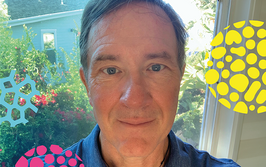
Explosive Experimentation
A holistic view of fireballs: infrared spectroscopy facilitates the acquisition of continuous chemical data from explosions
What?
Researchers have developed a novel method to study explosions using infrared spectroscopy. Specifically, broadband Swept-wavelength external cavity quantum cascade laser (swept-ECQCL) spectroscopy allows the acquisition of absorption spectra for chemical products produced within explosive fireballs – with the impressive sampling rate of 500 kHz (1).
How?
Directing a laser generated by the swept-ECQCL device through the fireball, the team were able to monitor changes in chemical composition over the first 10 ms post-explosion. Beyond that initial period – and up to the 100 second mark, the team used broadband high-resolution absorption spectra acquired over the spectral range of 2050–2300 cm−1 at a 100 Hz rate.
What?
Researchers have developed a novel method to study explosions using infrared spectroscopy. Specifically, broadband Swept-wavelength external cavity quantum cascade laser (swept-ECQCL) spectroscopy allows the acquisition of absorption spectra for chemical products produced within explosive fireballs – with the impressive sampling rate of 500 kHz (1).
How?
Directing a laser generated by the swept-ECQCL device through the fireball, the team were able to monitor changes in chemical composition over the first 10 ms post-explosion. Beyond that initial period – and up to the 100 second mark, the team used broadband high-resolution absorption spectra acquired over the spectral range of 2050–2300 cm−1 at a 100 Hz rate.
The study examined four types of high-energy explosive during detonation in a purpose-built, blast-resistant chamber. Many products are produced during such explosions, among them carbon dioxide, carbon monoxide, water vapor, and nitrous oxide, and each can be distinguished by its infrared absorption pattern.
Why?
The fleeting nature of detonation presents analytical challenges. Certain probes (for example, thermocouples or pressure transducers) can produce time-resolved data on physical conditions, but clearly provide no chemical information. Meanwhile, laboratory analysis only grants access to accurate chemical profiles of starting materials or end products -leaving guesswork or modeling to fill in the gaps.
In contrast, optical measurement techniques, which can be performed from a safe distance (a crucial benefit in this application), have a sufficiently rapid response – typically limited by the speed of optical detection – and can therefore provide a stream of continuous chemical data as the explosion unfolds.
The team are optimistic that future endeavors – including extending the range of wavelengths studied – will provide insight across a range of disciplines, from crime scene investigation to explosives manufacturing and management.
- M C Phillips et al., “Characterization of high-explosive detonations using broadband infrared external cavity quantum cascade laser absorption spectroscopy”, J Appl Phys, 126 (2019). DOI: 10.1063/1.5107508
Having thrown myself into various science communication activities whilst studying science at University, I soon came to realize where my passions truly lie; outside the laboratory, telling the stories of the remarkable men and women conducting groundbreaking research. Now, at Texere, I have the opportunity to do just that.

















